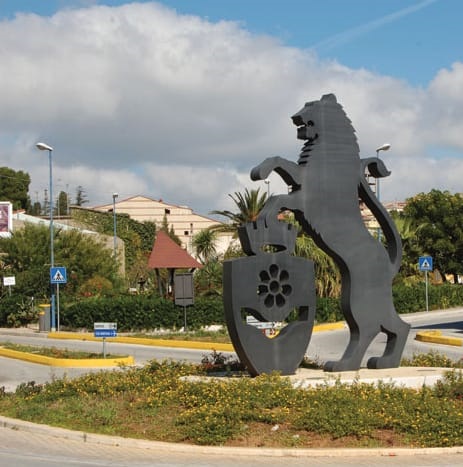Aquino is a small and fascinating commune of south Ciociaria with stories and traditions that still live today like that of the 'beans for the dead'.
On November 2 of each year in St. Thomas Square, the centre of the town, an event is held that attracts many people interested in the history of the celebration. The rite has ancient origins and dates back over 200 years to the night between 1 and 2 November when an old Aquino family was preparing a bean soup.
In Aquino they used small favas, a plant that grows just in this area, and the soup was offered to the population the next day for free. The Aquino plant has its own peculiarity due to the type of soil in the area and is now replicated by the local farmers.
The preparation was slow and laborious and took place on the ground floor of a building in Via Giovenale. Then, women used to do all the stages of soup preparation, while the men were in charge of the fire, as the cooking took place slowly in large boilers fed with firewood.
Early in the morning of November 2, the first hours of the morning, large groups of people of various ages were hanging around in front of the palace gate. Each of them had a container of earthenware or other material of the time to savour the soup.
That day was a celebration for so many because it was a time of extreme poverty and the taste of that soup was to cheer the soul and stomach. It was also an important time for the community that was gathering. For people gathered there, eating the dish together was the occasion for to remember and to share a story.
The custom has been preserved for many years and still today's elder people tell it with smiles and joy. In fact, the ritual remains one of the oldest in which offerings of the families are made in memory of the dead, those who are no longer there.
On November 2, or in the days around it, several communities spread throughout Italy carry out the same rite in the same manner pointing to the ancient and authentic value of tradition. Similar events take place in Castel Viscardo near Terni, San Giorgio in Valpolicella in Verona, Primiero in Trento, plus others.
The rite can be traced back to the Middle Ages and to monasticism (Odilone di Cluny, 998) when it was decided to establish November 2 as the Feast for the Dead. On this day, in fact, many rites and alms were offered to the poor who were ‘anthropologically’ considered the "closest figures to the dead".
There are so many stories that enthrall the history of this rite in many towns distant many kilometers from each other. There are testimonies of wills bequeathing lands that, according to what they say, should be sown to small fave beans, since then, when eating this legume, people would remember a relative or an ancestor.
The choice of this bean probably arises from the stories surrounding this legume since ancient Greece where Pythagoras regarded it as the 'door of Hades' and it is said to be the favorite food of Hercules for its aphrodisiac properties.
All this is really exciting, as is exciting the path of this and of the same rites elsewhere. The testimony of the strength of this tradition is that the story has not been lost despite a break during WW2 on the Cassino front when so much was destroyed. Afterwards, the original story was handed down alive and strong, and the celebration was resumed thanks to a local association ("La Torre") that keeps this memory alive every year.
To participate, you can go to the square and taste an exquisite soup with beans and sausages accompanied by bread made with maize flour, just like the secular tradition.
And during this time, do not miss the opportunity to visit the ancient Roman city of Aquinum and the Archaeological Museum where lies the Sarcophagus of Quadriga, which represented Italy at the 2016 Olympics in Rio de Janeiro.








Follow us